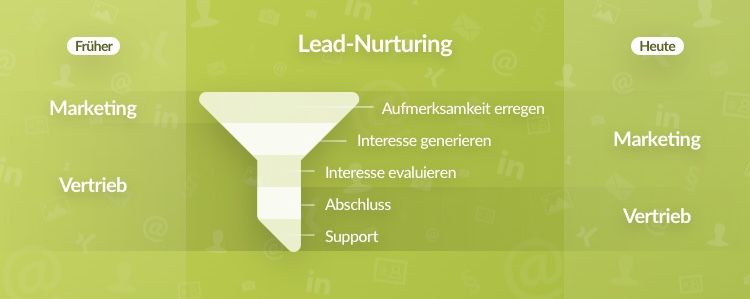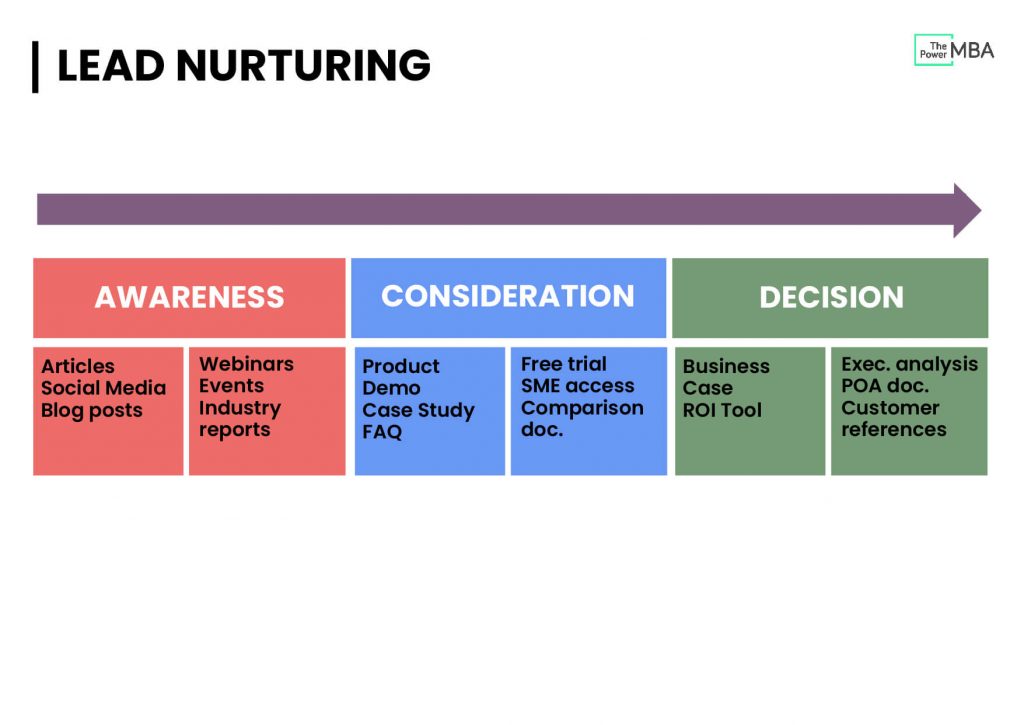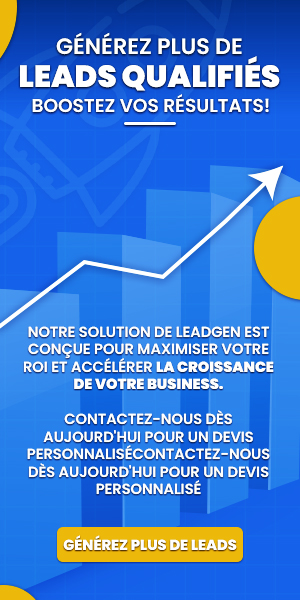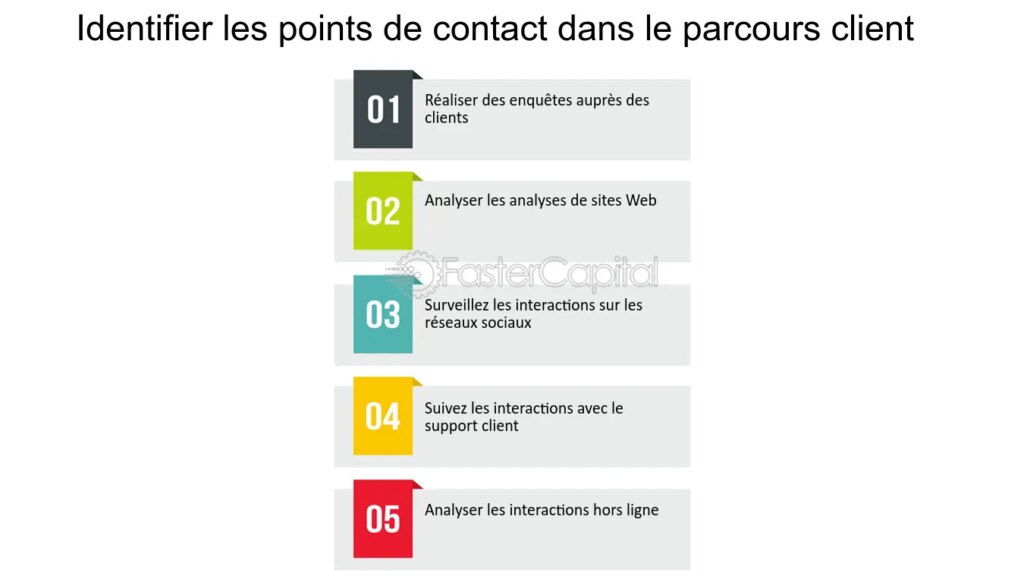In an increasingly competitive business environment, converting prospects into loyal customers is a major challenge for any business. Lead nurturing is an essential strategy for supporting prospects throughout their purchasing journey, providing them with relevant information and establishing a relationship of trust. By adopting effective nurturing practices, businesses can not only improve their conversion rates, but also promote customer loyalty. This article explores the best approaches and tools for implementing effective lead nurturing, in order to transform interested prospects into true brand ambassadors.
Table des matières
ToggleUnderstanding the lead nurturing process

THE lead nurturing is an essential process for converting prospects into loyal customers. It involves establishing long-term relationships with prospects, supporting them throughout their purchasing journey. Understanding this process helps businesses better target their marketing efforts.
THE lead nurturing is based on several key steps:
- Identification of prospects: Segment your audience based on their online behavior and needs to better personalize your interactions.
- Commitment : Use tailored content, like blog posts, webinars, or case studies, to pique interest and engage in conversation with your prospects.
- Automation: Implement automation tools to track prospect interactions and send personalized messages based on their interests.
- Monitoring and analysis: Regularly evaluate the performance of your campaigns by analyzing data. This allows you to adjust your nurturing strategies and improve results.
During this process, emphasis should be placed on personalization and the relevance messages. Prospects should feel like they are receiving information and offers tailored to their specific needs. By integrating engaging and informative content, it is possible to increase conversion rate.
Finally, the lead nurturing should not only focus on immediate sales. By developing a trusted relationship, you are able to build customer loyalty and open the door to cross-selling and referral opportunities.
The key stages of lead nurturing
THE lead nurturing is a strategic process that aims to engage prospects at every stage of their buying journey. Understanding this process is essential for any business wanting to turn prospects into loyal customers. Effective nurturing relies on in-depth knowledge of prospects’ needs and behaviors.
To set up a lead nurturing process, it is crucial to follow several key steps that guarantee a personalized and relevant approach.
- Segmentation : Identify the different categories of prospects based on their characteristics, behaviors and interests. This will allow you to create messages tailored to each segment.
- Content Creation : Develop relevant, valuable content that addresses prospects’ questions and concerns. This may include articles, case studies, white papers or videos.
- Automation : Use automation tools to track prospect interactions with your content. This will automatically trigger actions, such as sending personalized emails based on their behavior.
- Personalization : Adapt your messages according to the identified prospect segments. Personalization increases engagement and strengthens the relationship with the prospect.
- Monitoring and analysis : Evaluate the performance of your nurturing actions. Analyze data to understand what works and adjust your strategies accordingly.
THE lead nurturing is not a one-off event, but an ongoing process. By adopting a well-defined strategy, businesses can not only increase their chances of conversion, but also build long-term customer loyalty. Regular and relevant engagement throughout the purchasing journey helps build a lasting and trusting relationship with prospects.
Lead nurturing tools to use
THE lead nurturing is a crucial process in the customer journey, allowing you to convert prospects into loyal customers. It is a systematic approach to building a lasting relationship with prospects by guiding them through every step of their purchasing decision. Understanding how the different phases of this process work is essential to optimizing business performance.
The lead nurturing process is structured around several key stages:
- Lead identification : Detect and qualify prospects according to their purchasing potential.
- Personalization of communications : Adapt content and messages according to the behavior and interests of prospects.
- Ongoing commitment : Maintain regular contact through relevant content to keep prospects informed and interested.
- Data analysis : Track interactions to adjust nurturing strategies and improve the conversion rate.
For these steps to be effective, it is essential to use lead nurturing tools adapted. These solutions make it possible to automate processes while maintaining a human connection via quality content.
Here are some essential tools:
- Marketing Automation Software : These tools make it easier to send targeted emails and manage nurturing campaigns.
- CMT (Customer Management Tools) : Allow you to segment leads and store valuable information for increased personalization.
- Data Analysis Platforms : Help track prospect behaviors, engagement and interactions within different campaigns.
- Content Creation Tools : Used to produce blog posts, white papers, videos, etc., to provide added value to prospects.
THE lead nurturing is therefore a powerful tool for businesses looking to improve their conversion rate and build customer loyalty. By understanding the process and using the right tools, it becomes possible to effectively turn prospects into loyal customers.
Strategies for converting leads into customers
The conversion of prospects in loyal customers is based on strategies of lead nurturing well developed. These strategies not only keep prospects interested, but also guide them through the purchasing process towards an informed decision.
One of the key elements is the segmentation. By dividing your database into groups based on specific criteria like purchasing behavior, needs or interests, you can send more relevant messages. This helps increase engagement and create stronger relationships with your prospects.
Then, it is crucial to adopt an optimal purchasing journey. Create nurturing scenarios which correspond to the different stages of the customer journey allows interactions to be personalized. For example, welcome emails for new contacts, followed by educational content for those wondering about a product, and finally special offers to encourage purchase.
Use automation tools to manage lead nurturing can also optimize your efforts. These tools automatically track interactions and send personalized communications based on prospect behavior. This reduces the time spent on manual management and ensures immediate responsiveness.
It is also essential to combine valuable content And human interactions. Offering webinars, case studies or informative blog posts helps establish expertise and build trust. At the same time, maintaining direct interactions via calls or personalized meetings with prospects makes it possible to address their concerns and adjust the offer accordingly.
Finally, data analysis plays a fundamental role. Regularly evaluating the results of your nurturing campaigns allows you to identify what is working and what is not. Adjustments based on these analyzes will help improve conversion rate and to refine nurturing strategies to make them even more effective.
Personalization of communication
The transformation of prospects into loyal customers relies on lead nurturing strategies well defined. One of the most crucial aspects of this approach is the personalization of communication with prospects, adapted to their needs and behaviors.
A effective lead nurturing requires segmenting your database to send relevant messages. Here are some key points to consider:
- Identify segments : Create categories based on criteria such as age, preferences and behavior.
- Adapt messages : Each segment should receive a message that meets their specific interests.
- Use diversified channels : Vary communication channels, such as emails, social networks or SMS, to reach your prospects where they are.
It is also essential to maintain regular communication without being too intrusive. You can set up a communication schedule that includes:
- Informative newsletters on your sector of activity
- Personalized promotional offers
- Invitations to relevant events (webinars, conferences)
In addition, the use of toolsautomation allows you to track prospect interactions precisely. Through data analysis, you will be able to identify purchasing behaviors and adjust your strategy accordingly. This not only helps increase conversion rate, but also to build a lasting relationship of trust with your potential customers.
By integrating these different personalization and automation strategies, businesses can turn prospects into loyal customers, thereby improving their return on investment in the long term.
Lead tracking and engagement
To transform prospects into loyal customers, it is essential to adopt lead nurturing strategies effective. This involves regular monitoring and a personalized approach that transmits added value throughout the purchasing journey.
Lead tracking and engagement is crucial. It is important to create regular touchpoints that promote interaction and strengthen the relationship. Here are some methods to achieve this:
- Personalized emails : Send content tailored to prospects’ interests and behaviors, such as case studies, blog articles or interviews.
- Communications Automation : Use automation tools to send messages at the right time, ensuring you never miss a contact opportunity.
- Surveys and feedback : Regularly ask your prospects for their opinions to better understand their needs and adjust your strategy accordingly.
- Webinars and online events : Offer informational sessions that showcase your expertise and allow prospects to interact directly with your team.
The objective is to remain present in the minds of prospects without being intrusive. The right balance between relevant information And interaction can turn initial interest into a lasting relationship.
Careful monitoring of prospect engagement also helps to measure their interest and adjust your approach. Monitor online behaviors and responses to your communications to identify which prospects are most engaged.
By putting these monitoring and engagement strategies into practice, your approach to lead nurturing will be more effective, thus facilitating the conversion of prospects into loyal customers.














